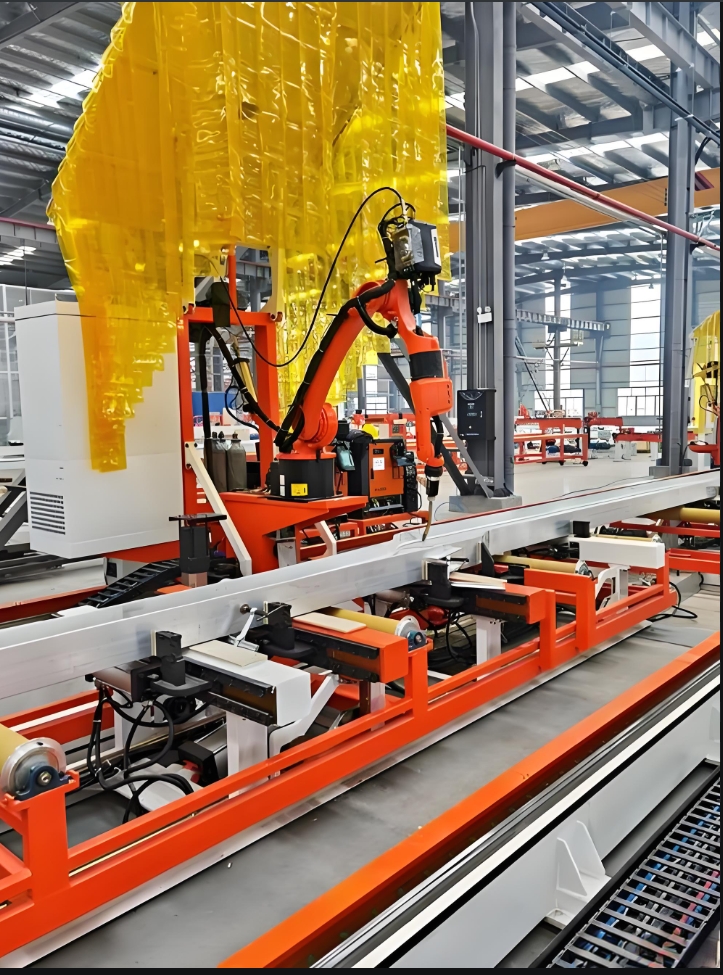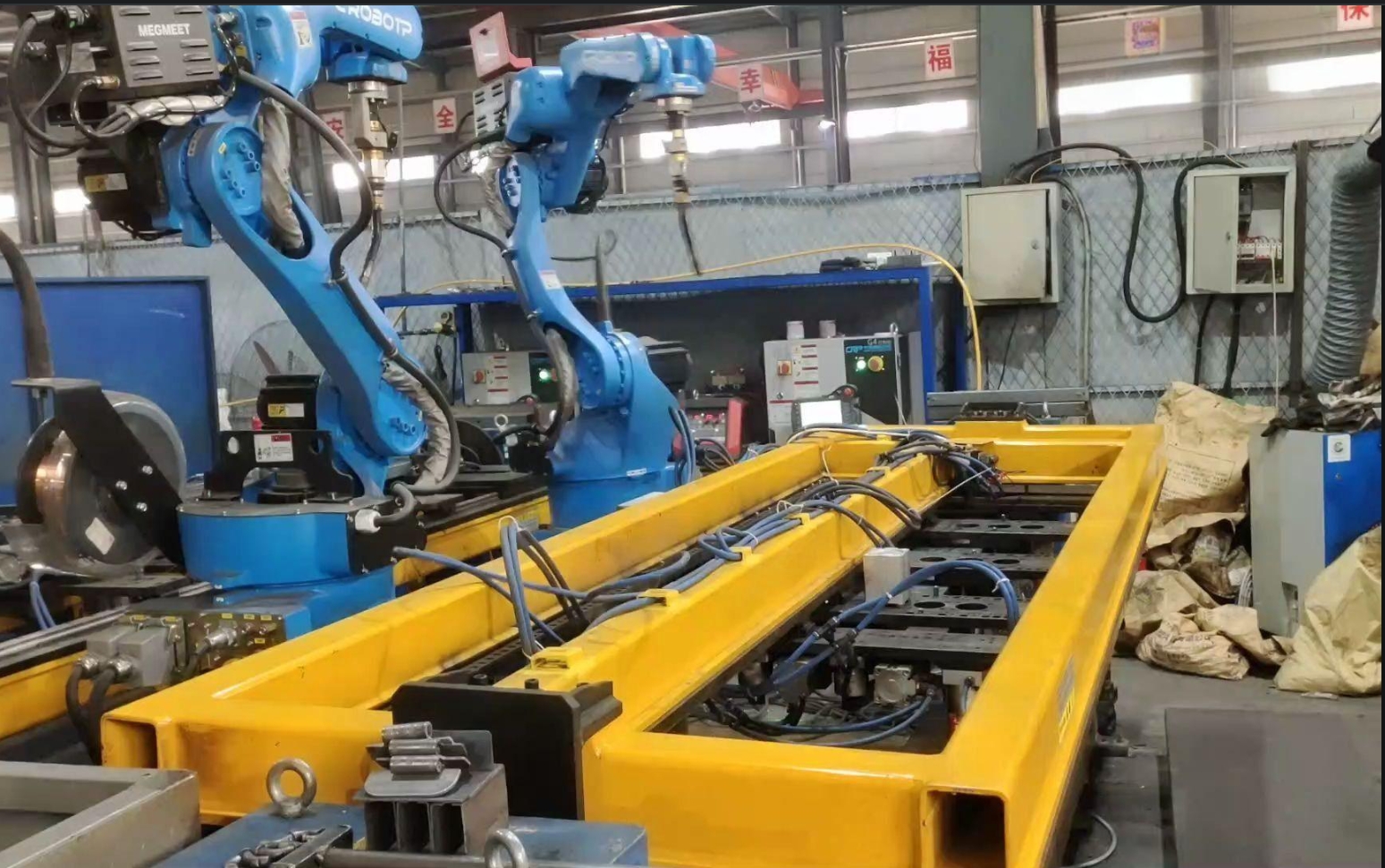Introduction
The automotive industry has long been a pioneer in adopting cutting-edge technologies to enhance efficiency, precision, and scalability. Among its most critical components is the vehicle frame—the structural backbone that ensures safety, durability, and performance. As demands for lightweight materials, customization, and rapid production escalate, manufacturers are increasingly turning to industrial robots to revolutionize frame fabrication. This article explores how robotics is reshaping the production of automotive frames, from material handling to welding and quality control, while addressing challenges and future trends in this dynamic sector.
Section 1: The Critical Role of Vehicle Frames in Automotive Design
Vehicle frames, often referred to as chassis, serve as the foundation for all automotive systems. They must withstand immense stress, absorb collision impacts, and support the weight of the vehicle and its occupants. Modern frames are engineered using advanced materials such as high-strength steel, aluminum alloys, and even carbon fiber composites to balance strength with weight reduction.
However, manufacturing these complex structures requires extreme precision. Even minor deviations in welding alignment or component assembly can compromise safety and performance. Traditional manual processes struggle to meet the stringent tolerances demanded by today’s automotive standards, creating a pressing need for automation.
Section 2: Industrial Robots in Frame Fabrication: Key Applications
2.1 Material Handling and Component Preparation
The production of automotive frames begins with raw material processing. Industrial robots equipped with advanced grippers and vision systems excel at handling bulky metal sheets, tubes, and prefabricated components. For example:
- Sheet metal manipulation: Robots pre-cut and shape steel or aluminum sheets into frame rails, crossmembers, and brackets with sub-millimeter accuracy.
- Composite material handling: Collaborative robots (cobots) safely manage lightweight but fragile materials like carbon fiber, reducing waste and human error.
2.2 Welding and Joining Technologies
Welding remains the most robot-intensive stage in frame manufacturing. Modern robotic welding systems deliver unparalleled consistency across thousands of weld points:
- Resistance spot welding: Multi-axis robots perform high-speed spot welding on steel frames, ensuring uniform joint strength.
- Laser welding: Precision robots equipped with laser heads create seamless joins for aluminum frames, minimizing thermal distortion.
- Adhesive application: Robots apply structural adhesives in complex patterns to bond hybrid metal-composite frames, a process nearly impossible to replicate manually.
Case Study: A leading European automaker reduced welding defects by 72% after deploying a fleet of 6-axis robots with adaptive path correction, capable of adjusting weld parameters in real time based on sensor feedback.
2.3 Assembly and Integration
Frame assembly involves integrating suspension mounts, engine brackets, and safety components. Dual-arm robots mimic human dexterity to fasten bolts, install bushings, and align subassemblies. Vision-guided systems ensure components are positioned within ±0.1 mm tolerances, critical for maintaining drivetrain alignment.
2.4 Quality Assurance and Metrology
Post-production inspection is vital for compliance with safety regulations. Robotic systems now perform:
- 3D laser scanning: Robots map entire frame geometries to detect warping or dimensional inaccuracies.
- Ultrasonic testing: Automated probes inspect weld integrity without damaging surfaces.
- AI-powered defect detection: Machine learning algorithms analyze camera feeds to identify micro-cracks or coating inconsistencies.
Section 3: Advantages of Robotic Automation in Frame Production
3.1 Precision and Repeatability
Industrial robots eliminate human variability. A single robotic welding cell can maintain 0.02 mm repeatability across 24/7 production cycles, ensuring every frame meets exact design specifications.
3.2 Enhanced Worker Safety
By automating hazardous tasks like overhead welding or heavy lifting, manufacturers have reported a 60% reduction in workplace injuries related to frame fabrication.
3.3 Cost Efficiency
While initial investments are significant, robots reduce long-term costs through:
- 30–50% faster cycle times
- 20% lower material waste
- 40% reduction in rework expenses
3.4 Scalability and Flexibility
Modular robotic cells allow manufacturers to quickly reconfigure production lines for new frame designs. For instance, electric vehicle (EV) frames with battery enclosures can be integrated into existing systems with minimal downtime.
Section 4: Overcoming Challenges in Robotic Frame Manufacturing
4.1 Material Compatibility Issues
The shift to multi-material frames (e.g., steel-aluminum hybrids) requires robots to handle dissimilar joining techniques. Solutions include:
- Hybrid welding heads combining arc and laser technologies
- Magnetic grippers for handling non-ferrous metals
4.2 Programming Complexity
Offline robot programming (OLP) software now allows engineers to simulate and optimize robotic workflows digitally, slashing commissioning time by up to 80%.
4.3 Cybersecurity Risks
As frame production becomes increasingly connected via Industrial IoT, manufacturers must implement encrypted communication protocols and regular firmware updates to protect robotic networks.
Section 5: The Future of Robotic Frame Manufacturing
5.1 AI-Driven Adaptive Manufacturing
Next-generation robots will leverage artificial intelligence to:
- Self-calibrate tools based on material thickness
- Predict and compensate for tool wear
- Optimize energy consumption during peak demand
5.2 Human-Robot Collaboration
Cobots with force-limited joints will work alongside technicians for final frame adjustments, combining human decision-making with robotic precision.
5.3 Sustainable Production
Robotic systems will play a pivotal role in achieving circular manufacturing:
- Automated disassembly of end-of-life frames for recycling
- Precision material deposition to minimize raw material use
Conclusion
The integration of industrial robots into automotive frame production represents more than just technological advancement—it signifies a fundamental shift in how vehicles are conceived and built. By delivering unmatched precision, efficiency, and adaptability, robotic systems empower manufacturers to meet evolving demands for safer, lighter, and more sustainable vehicles. As AI, advanced sensors, and green technologies continue to mature, the synergy between robotics and automotive engineering will undoubtedly drive the industry toward unprecedented levels of innovation.
For companies specializing in industrial robotics, this transformation presents immense opportunities to collaborate with automakers in redefining the future of mobility—one perfectly crafted frame at a time.
Word Count: 1,480
Key Terms: Automotive frame robotics, robotic welding systems, AI in manufacturing, collaborative robots, sustainable production
SEO Recommendations: Include meta descriptions targeting “automotive frame automation” and “industrial robots for car chassis.” Use internal links to related case studies or product pages.
Post time: Mar-26-2025







